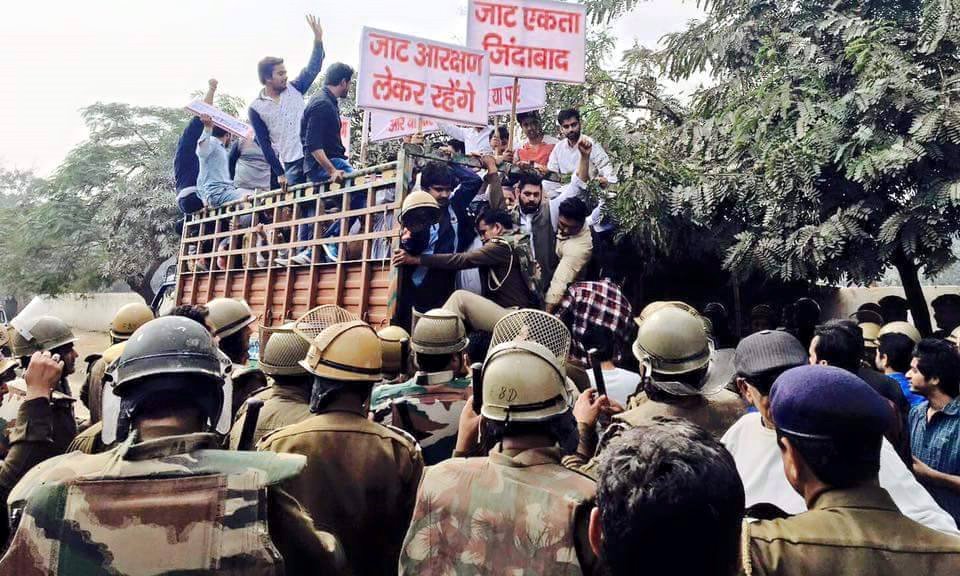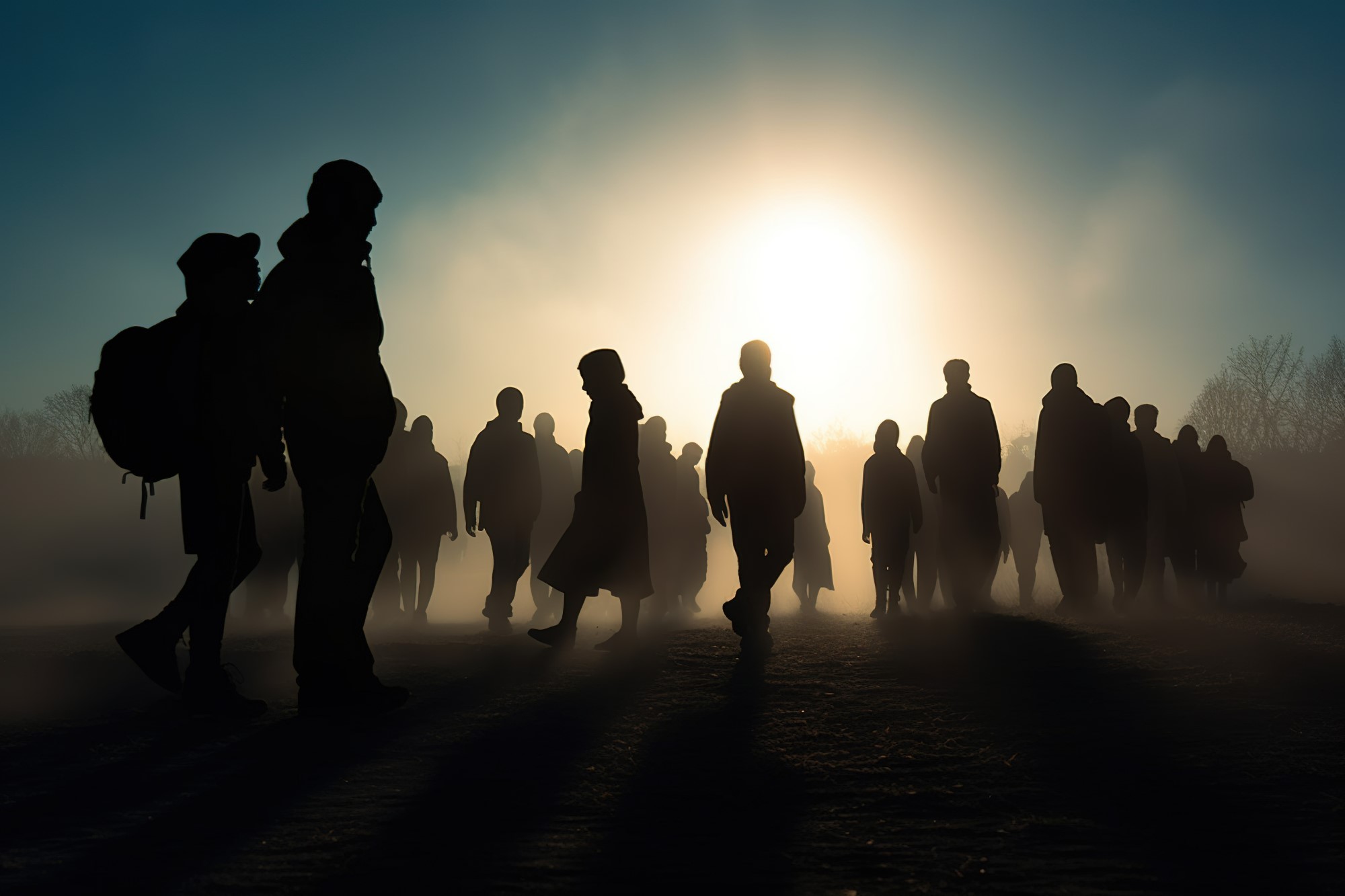Affirmative Hesitations in India and the United States
In February of 2016, caste tensions that have always smoldered under the covers of Indian life were shocked back into the open. February’s caste riots in Haryana, India, brought much needed attention to the ways in which the long-outlawed caste system manifests itself in modern India. These rioters joined the peculiar yet growing number of protesting high castes. The Jats, members of a high caste in northern India, violently protested to change their status from a high caste to a low caste to gain from the government sanctioned benefits enjoyed by the lower castes.
The lower castes of India benefit from the country’s unique version of affirmative action—the quota system. Affirmative action itself refers to a set of policies aimed at favoring members of a disadvantaged group who suffer currently or historically from discrimination. India implements this idea through a quota system that reserves a certain percentage of seats in elected bodies, public office, and universities for the lower castes. These reservation requirements may range anywhere from 25% to 69% depending on the state and particular public institution.
Though the Indian quota system sounds radical, it is but a version of the same affirmative action that is implemented in the United States. In the States, governments and private institutions like universities and companies take positive steps to increase the representation of racial minorities and women in areas of employment, politics, and education. In implication, the US government permits and encourages that minorities who have been traditionally excluded be given preference or special consideration during selection processes.
An interesting question may be posed about the difference in the ways in which India and the States realize their goals of affirmative action. Some, like Nathan Glazer from the Harvard Crimson, believe that there is a difference between “special considerations” and quotas, since quotas are less meritocratic than their less explicit alternative. It may also be argued that there is no morally significant difference between the two, since they are both forms of positive discrimination—that is, measures that seek to increase equality of opportunity by discriminating in favor of marginalized groups.
Either way, the different policies of affirmative action both in India and the United States are hotly debated by their people, as two distinct perspectives emerge.
From one perspective, affirmative action is beneficial since it produces consequences that align with a democratic society’s ideals of justice and equality. According to thinkers like Arman Kanooni at Johns Hopkins University, justice must be served in favor of the historically oppressed communities. The lower castes of India faced severe discrimination by being denied education, jobs, and rights for up to 3000 years. Black people in the US faced slavery for the first 250 years of the country’s history, and institutionalized racism ever since. These oppressed minority groups should be compensated for the injustices they faced, and deserve reparation and restitution.Through affirmative action, democratic countries like India and the United States would be able to correct the effects of an history of paralyzing discrimination and achieve equality as a consequence.
To some, the positive consequences of equality and justice outshine the negatives of reverse discrimination. For example, Justice John Paul Stevens declared in the case Adarand v. Pena, “There is no moral or Constitutional equivalence between a policy that is designed to perpetuate a caste system and one that seeks to eradicate racial subordination.” Stevens asserts that since the ends of eradicating discrimination versus oppressing the minority are obviously distinct, the means by which they were accomplished should be morally and legally irrelevant. However, not all share this point of view.
To present the alternative perspective, affirmative action may be viewed as harmful to society. This is because the action of reverse discrimination defies the moral principle of nondiscrimination, and because affirmative action may realize many unintended negative consequences.
Both India and the United States have found that it is a moral principle that discrimination is to be deplored. To some philosophers like Aristotle and Immanuel Kant, a moral principle must be equal for all citizens regardless of context of intent or consequence. Kant and thinkers like the American political theorist Michael Walzer would argue that if discrimination is to be condemned when the motives behind it are to preserve power by oppressing the minority, it is still to be condemned when the motives behind it are to redress an historical injustice.
In addition to looking at the very act of reverse discrimination as problematic, opponents of affirmative action argue that the policies pose many unwanted consequences. The meritocratic ideals of deserving what one earns are compromised when the bar is lowered for minority candidates who have guaranteed reservations in jobs and universities. To tie this concept back to our countries under study, scores of tireless middle class students in India do not get rewarded for their hard work, and have to compete against insurmountable odds of getting into public universities, after merely 50% of the seats are open to general population once reservation requirements are fulfilled. The World Health Organization recently reported that India has the highest student suicide rate in the world for the 15-to-29 age group, at 35.5 per 100,000 people in 2012. This is an extreme but very real consequence of demeaning meritocracy in a society—hopelessness and defeatism amongst the society’s most vulnerable, the youth.
Another unwanted consequence of affirmative action may be that unprepared applicants are mismatched with jobs and schools that are too demanding for their capabilities, leading to dissatisfaction and inefficiencies in the society. In the United States, it can be seen that black students attending law schools finish in the bottom 20% of their classes and are more likely to fail the Bar Exam. In India, the mismatch effect has truly detrimental long-term consequences such as the degenerated nature of the nation’s political and economic leaders and their poor decision making abilities. Lastly, affirmative action may not only create inefficiencies in a society but may also impose upon marginalized groups a victimized identity. Such policies may be viewed as patronizing and unappreciative of the minorities’ potential. As the list of unintended side effects of a policy simply aimed at reducing inequality pile up, it becomes clear that addressing inequality and privilege is a precarious task for any country.
In a world still reeling from the struggles of the past, it is sometimes difficult to grapple with the modern implications of supposedly bygone institutions of oppression. While slavery in the States and the caste system in India have long been illegal, their effects linger into modern society, and bring up important questions about how we can best even the divide between the privileged and underprivileged. All we know for certain, is that it is crucial that each country treat its problems of social and economic stratification with the nuance and attention to context that it requires. And while affirmative action may be the answer, it certainly isn’t a perfect one.





